By TR Robertson
Christmas will soon be here, and celebrations will begin throughout the country. Families will celebrate in a variety of ways, many following traditional family customs passed down from generation to generation. Christmas is also celebrated around the world and in many different ways from country to country. Some Christmas traditions are the same such as the Christmas tree complete with lights and decorations, Advent wreaths, Christmas stockings, Nativity scenes, Christmas carols, Christmas cards, religious services, and exchanging Christmas presents to name a few. Stories surrounding Santa Claus are also common, only in other countries he is called St. Nicholas, Kris Kringle, Father Christmas (Pere Noel), Christkind, Grandfather Frost, Julemanden, Julenissen, Kerstman, Sinterklaas even Odin.
Many national governments recognize Christmas as an official public holiday, others recognize it in a symbolic way but not as an official legal observance. For some countries Christmas is one of the most important time periods on the Christian calendar and connected to other holidays during this time of year such as Advent, the Feast of the Immaculate Conception, St. Nicholas Day, St. Stephen’s Day, and the Feast of the Epiphany. Various web sites list many of the ways Christmas is celebrated, one site listing 96 different countries with a look at traditions and customs each of these countries will exhibit during the holiday season.
The following will be a quick look at a few of countries throughout the world and a few of the ways Christmas is celebrated in the country. Celebrations can differ quick a lot depending on a variety of reasons, cultural differences, religions, national and local traditions just to name a few. Many of the traditions and customs are not followed by most citizens but can be found in various regions of the country. The countries listed are in no particular order.
Czech Republic – On Christmas Eve, many single Czech women put their backs toward the house front door and throw a show over their shoulder. If the shoe lands with the heel toward the door, she will not be married the coming year. If the front of the shoe points to the door, she will be married in the coming year.
Norway – On Christmas Eve, brooms and cleaning items are put away. Men fire guns into the air. According to an ancient belief, this is the time for witches and evil spirits to appear.
Australia – Christmas in Australia is in their summertime. Santa is pictured at times with kangaroos and surfboards instead of reindeer and a sleigh. Christmas is a national public holiday in Australia. Many traditions from the U.S. and U.K. are followed in Australia.
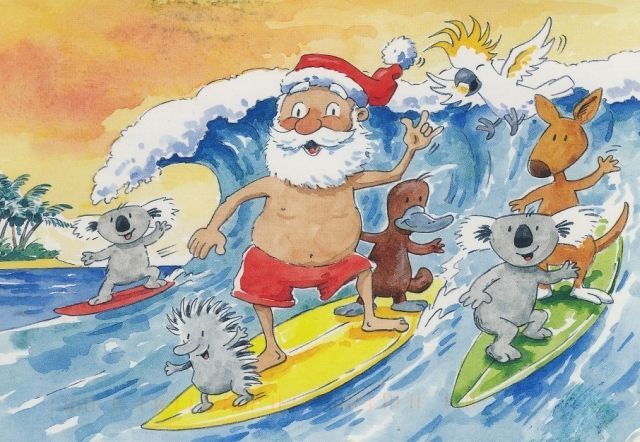
Armenia – Some Armenians fast the week before Christmas. On Christmas Eve they will have a meal called “khetum,” which includes rice, fish, chickpeas, yogurt soup, dried nuts, and grape jelly desserts.
South Africa – One of the food items added to the meal for some includes fuzzy Emperor Moth caterpillars fried in oil. The U.K. influence is found in many homes as far as traditional decorations and customs.
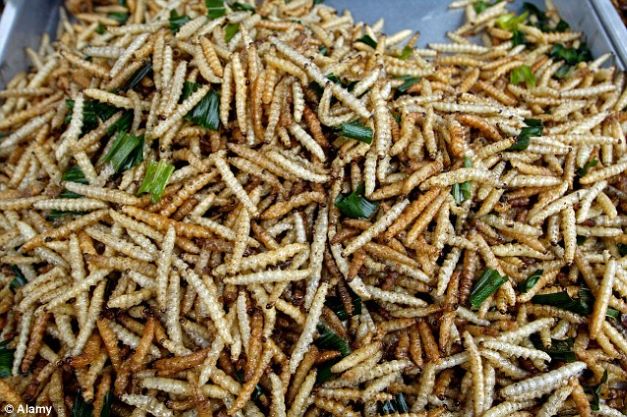
Ukraine – Fake spider webs are used as an outside decoration. The story says a poor family did not have money for decorations and at night the spiders decorated their home with webs that turned to gold and silver. The family became prosperous, and the spider wed covered trees now signify prosperity and wealth for the year.
Spain – In some regions a character called Caga Tico exists, which means pooping log. The children will feed the log in hopes it will grow bigger and bring presents. Parents swap the smaller log for larger ones when the children sleep and on Christmas Day the family will sing songs and the children will find presents in the hollow log.
India – Only 2.3% of the population celebrate Christmas, which represents about 25 million people. The people celebrating use banana or mango trees for Christmas trees as fir and pine trees are not in that part of the world.
Philippines – Not stocking are hung in homes, instead the children leave shoes out. Nochebuena parties are held on Christmas Eve with feasting and dancing. A parol, a lighted star lantern, is a prominent part of Christmas decorations.
Ireland – No milk and cookies are left out for Santa, instead he gets Christmas pudding and Guinness or Irish Whiskey. This is done on some parts of the U.K.
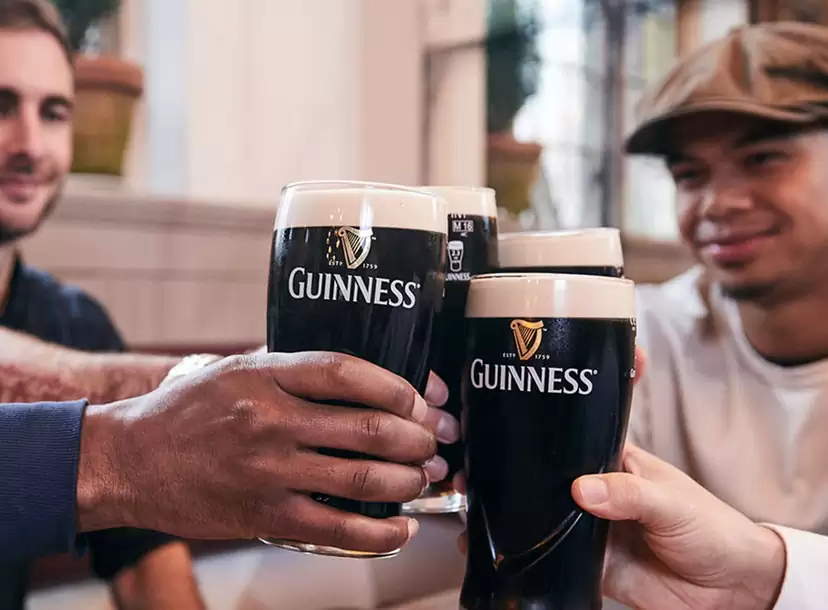
Japan – The traditional Christmas meal for the Japanese celebrating Christmas is Kentucky Fried Chicken.
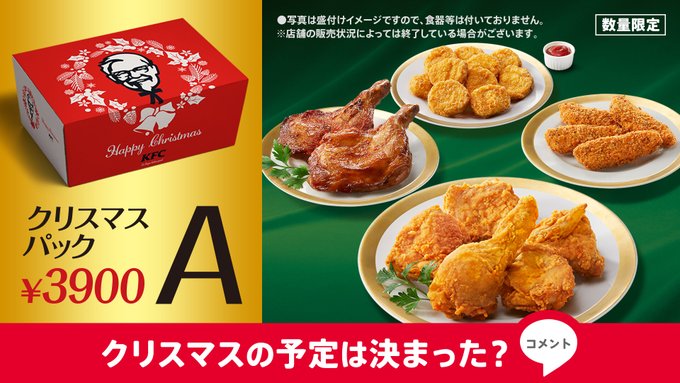
Canada – Canadians use the postal code HOH OHO for the North Pole. Thousands of volunteers respond to the letters children send to Santa. Many of the same customs in the U.S. are followed in Canada.
Poland – Christmas Eve dinner (Wigilia) begins with the sharing of the Oplatek, a paper-thin square wafer made of flour and water with an image of the Nativity on it. Everyone breaks off a small piece at the wafer and shares a holiday greeting before passing it on. The traditional dinner includes fried carp, beetroot soup, meatless ravioli, pierogi, pickled herring and fruit compote. Christmas Eve ends with Pasterka, Midnight Mass. According to the region, some gifts are opened on Christmas Day, some on December 6th. The gift giver on Christmas Eve is Gwiazdor (star man), Aniolek (little angel) or Dzieciatko (baby Jesus).
Slovakia – Slovakians purchase live carp, let it live in their bathtub for a couple of days before preparing it for the Christmas Day dinner. Legend says the scales bring luck and good fortune for the coming year. The tradition of Jaslickari involves young men dressed as shepherds or angels visiting their neighborhoods and presenting recitations and songs about the birth of Jesus.
Sweden, Finland, and Norway – St. Lucia’s Day is a special part of Christmas. She is said to be one of the first Christian martyrs. Celebrations include candlelit processions with the eldest girls in each family dressed in white gown, wearing a wreath, holding candles. The girls will serve the family S-shaped Lucia buns and coffee or mulled wine at their homes. Many Swedes follow the tradition of putting a rhyme written on the wrapping paper hinting at the gift. The Christmas meal includes small meatballs and hot dogs, lutfisk, salmon, potato casserole with anchovy, rice pudding. Desserts include toffee, nuts and fruits and figs, chocolate, dates and oranges decorated with cloves.
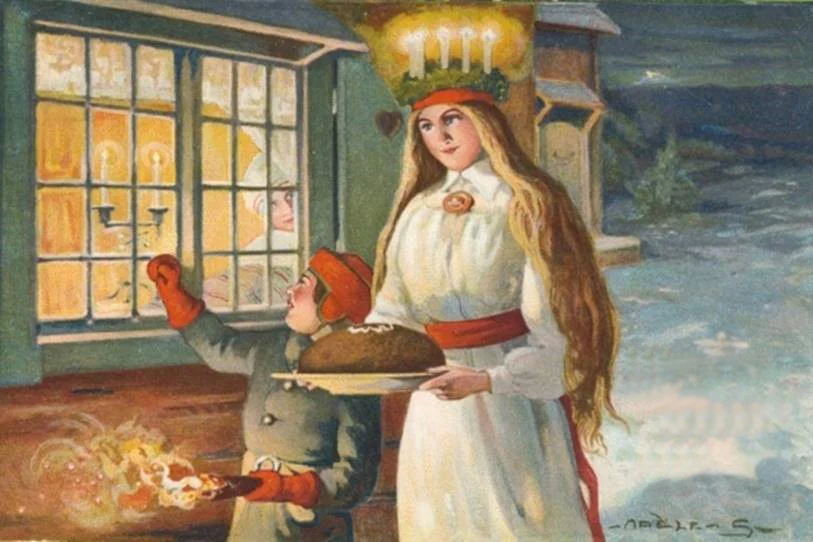
Ethiopia – People celebrate Christmas here, called Gana or Genna, on January 7 in accordance with the Ethiopian Orthodox calendar. Participants wear a thin white shawl, called a Netela, and proceed around the church three times before the service. They do not give gifts, but participate in the service, play games, and eat. Christians in the country fast for 40 days (Fast of the Prophets).
Germany – Mulled wine and bratwurst are popular during the many outdoor markets. Germany and Austria are thought to be the home of the first Christmas trees. St. Nicolas is the gift giver for presents on Christmas Day.
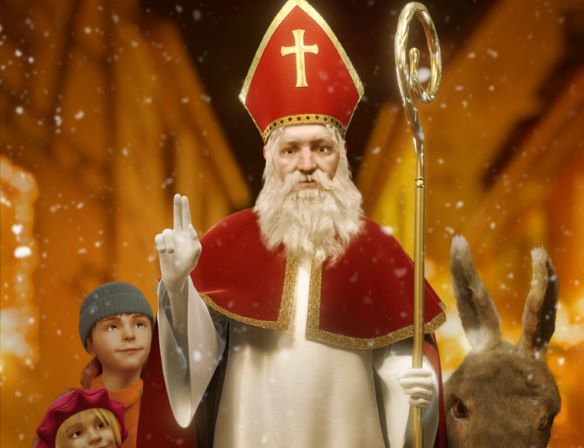
Austria – St. Nicholas brings gifts to good children, but parents tell them Krampus, half-man, half-goat, will take bad ones away. In some of the cities, a Krampuslauf (Krampus run) is held with men dressing as Krampus parading through the streets to scare children. Christmas trees are a large part of the decorations, and most towns have a large tree in the main town square. The feast of St. Nicholas marks the beginning of Christmas in Austria.
Many more customs and traditions will be in Part II as we look at how other countries celebrate the holidays.




